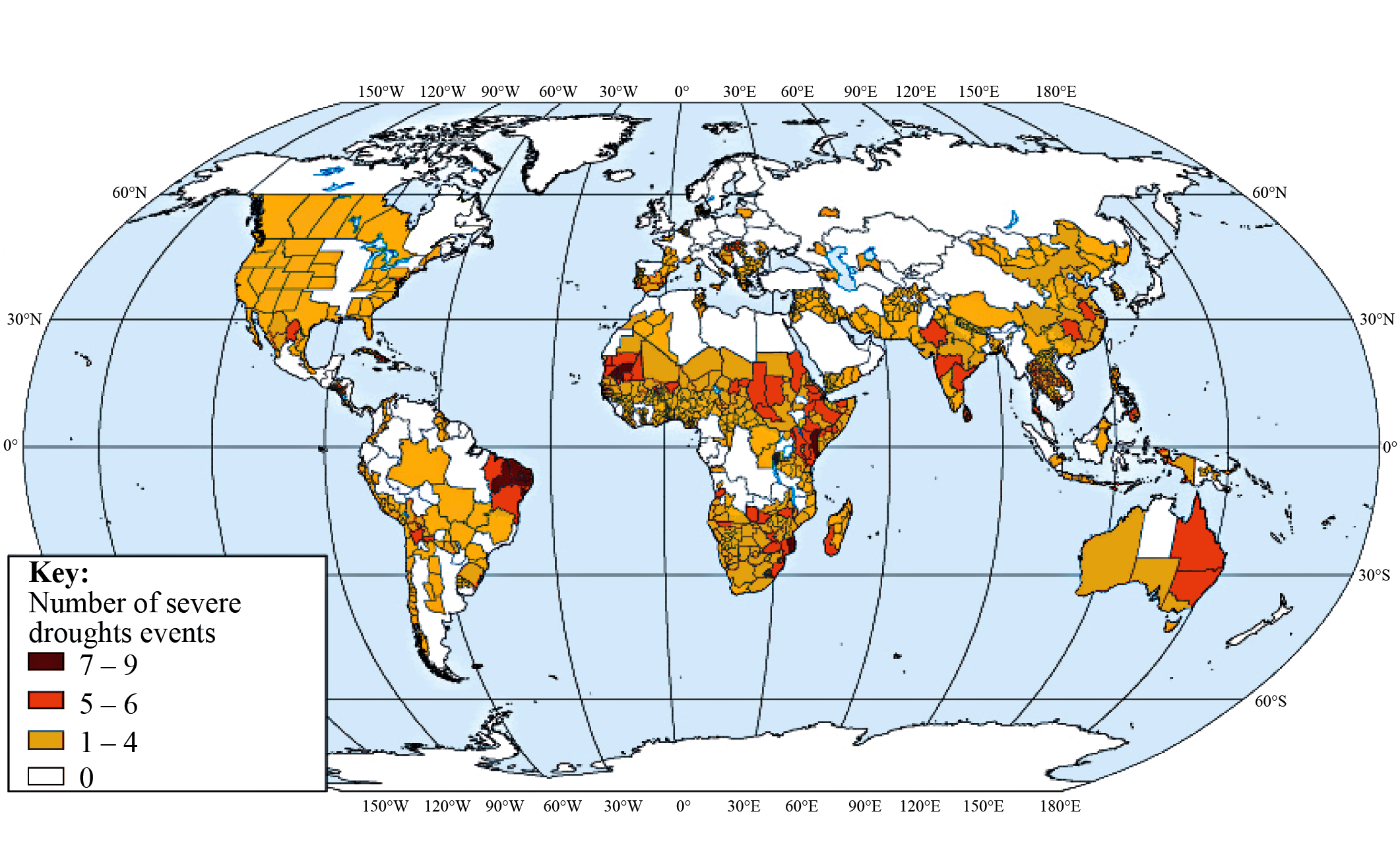| Date | May 2012 | Marks available | 2+2+2 | Reference code | 12M.2.bp.7 |
| Level | SL and HL | Paper | 2 | Time zone | |
| Command term | Analyse | Question number | 7 | Adapted from | N/A |
Question
The map shows the world distribution of severe drought events from 1974 to 2004.

[Source: http://www.preventionweb.net/files/10600_Figure226.jpg; ©UNEP/GRID]
Describe the distribution of areas in the northern hemisphere that have been affected by five or more severe drought events from 1974 to 2004.
Analyse three ways in which communities can reduce the impact of drought.
“Hazard preparedness is more important than hazard prediction.” Discuss this statement with reference to any one hazard other than drought.
Markscheme
Award 1 mark for each valid statement, either about general distribution (for example, most of the affected areas are between the equator and 30°N) or based on the naming of specific regions, for example, East Africa, or countries. No credit should be given for references to locations in the southern hemisphere.
Possible answers might include: early prediction through satellite remote sensing that detects changes in vegetation growth; the adoption of water conservation legislation in cities; cloud seeding; desalination; prevention of vegetation loss through overgrazing or soil erosion; water conservation techniques such as cisterns or tanks; catching run-off to raise water tables in wells using check dams and soil bunds; animal herd diversification; crop diversification migration; dry farming methods; government and international food aid; and disaster relief programmes. A variety of scales is acceptable.
Award 1 mark for a description of the method used, and 1 mark for development either by example or elaboration.
It is expected that most answers will refer to earthquakes or volcanoes, or to hurricanes or their associated hazards.
Answers that focus on a single, related hazard, such as a tsunami or storm surge, are equally acceptable. Discussion of human-induced hazards is also valid.
Answers should examine the effectiveness of methods of prediction of the chosen hazard and balance this with the success of methods used to prepare populations and property for the impact of a hazard event. In order to reach markbands E and F answers should present a discussion rather than just a list of prediction and preparation methods and reach a conclusion. It should not be possible to reach markbands E and F without reference to actual hazard events.
Marks should be allocated according to the markbands.
Examiners report
Some of the suggestions were long-term options that were not well related to reducing drought impact.
Responses tended to try to force rehearsed case studies into the question, irrespective of their real relevance. Some candidates discussed more than one type of hazard, in which case the strongest type was credited and the others ignored. In almost all cases, hazard prediction was less well understood than hazard preparedness.

